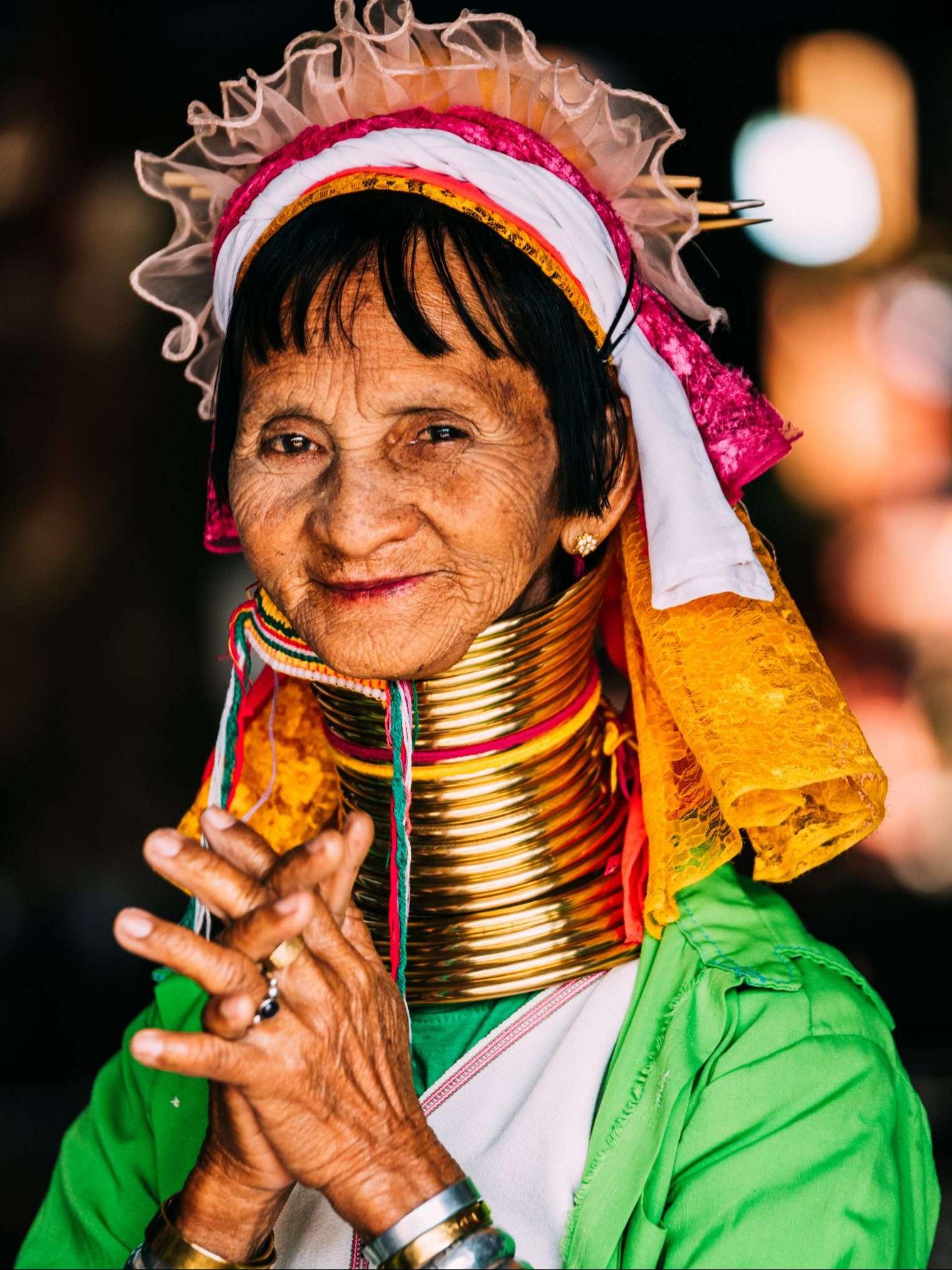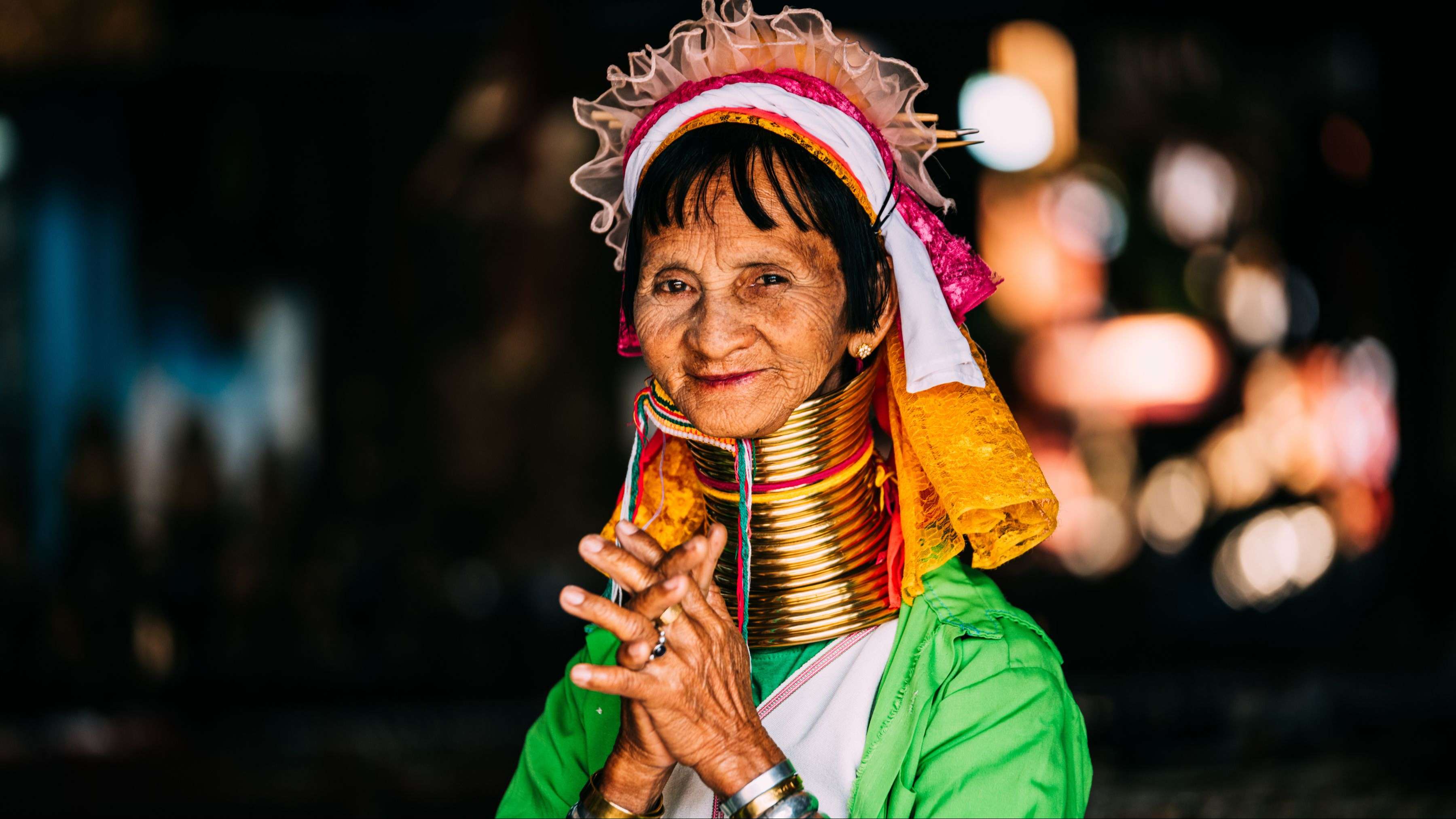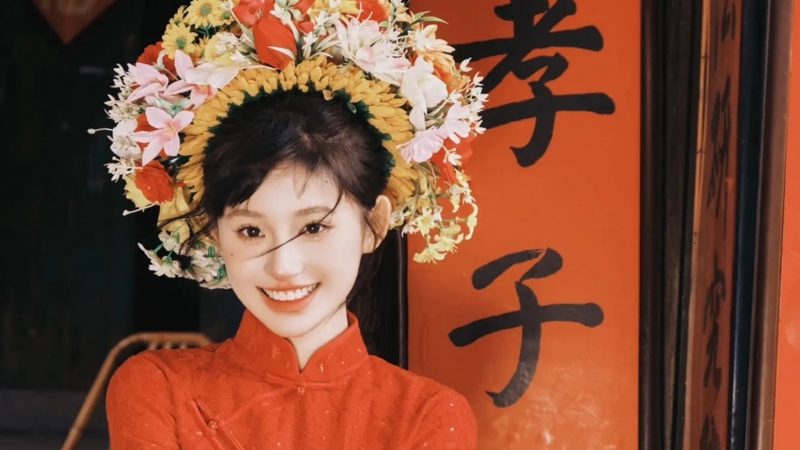Huai Sua Tao village is home to dozens of “long neck women” who are known for wearing numerous copper rings to elongate their necks. This uniqueness has attracted many tourists to the village, providing a stable source of income for the people. However, this is also a controversial tourist destination for these Myanmar refugees.
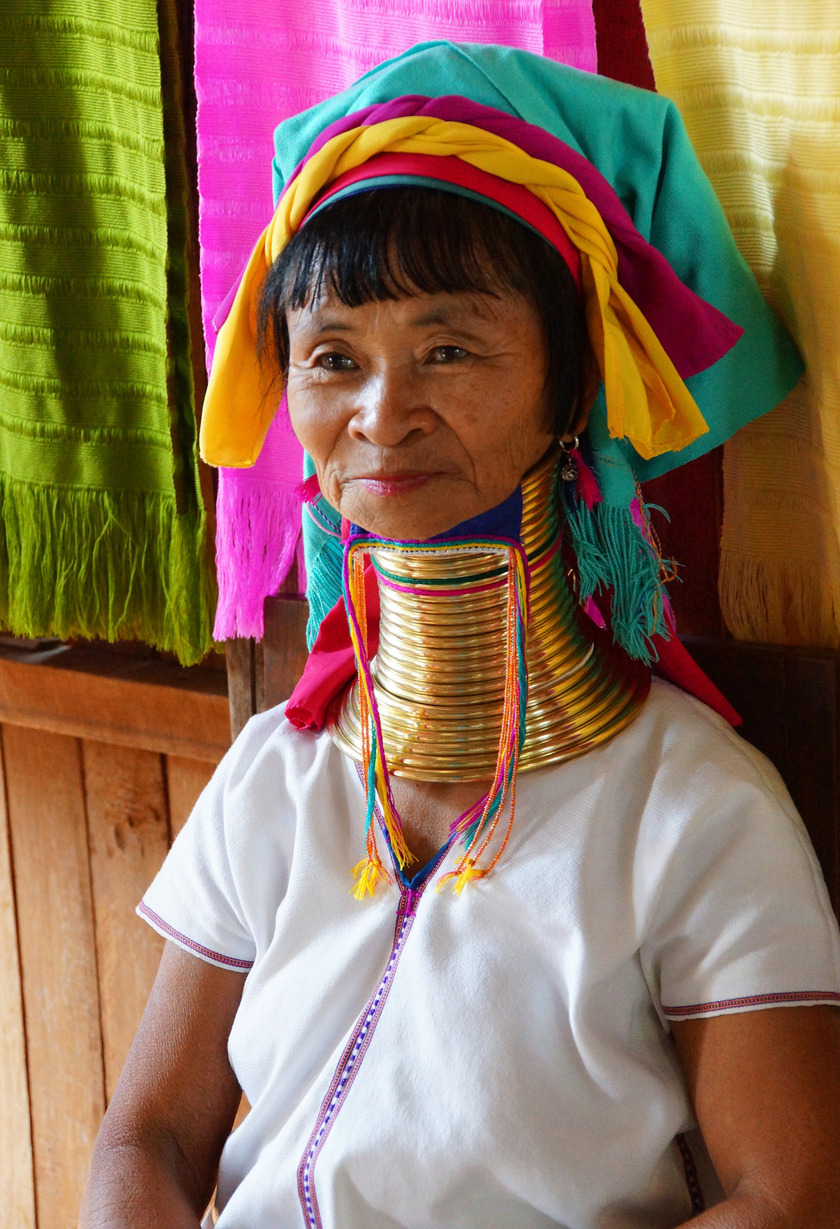
Anyone who comes here feels curious and impressed by the Kayan long-necked women.
Culture with its own unique features
The Kayan tribe’s long neck culture is not only a distinctive custom but also a symbol of wealth, power and beauty in their society. This culture originated from the Kayan tribe in Myanmar and has been maintained for generations since they migrated to Thailand about three decades ago. Bringing with them their rich cultural identity, the Kayan tribe introduced the tradition of wearing brass necklaces into their daily lives in Thailand, where they found a new home.

The Kayan people still maintain the custom of wearing many large rings around their necks.
Kayan are a group of Karenni people, of Tibetan origin, who live in the border region with Thailand. Kayan women beautify themselves in their own traditional way, which is to wear large rings to elongate their necks. A woman can wear up to 25 rings and the longer her neck, the more beautiful she is considered. Besides, it is also a symbol of nobility and wealth of the family.
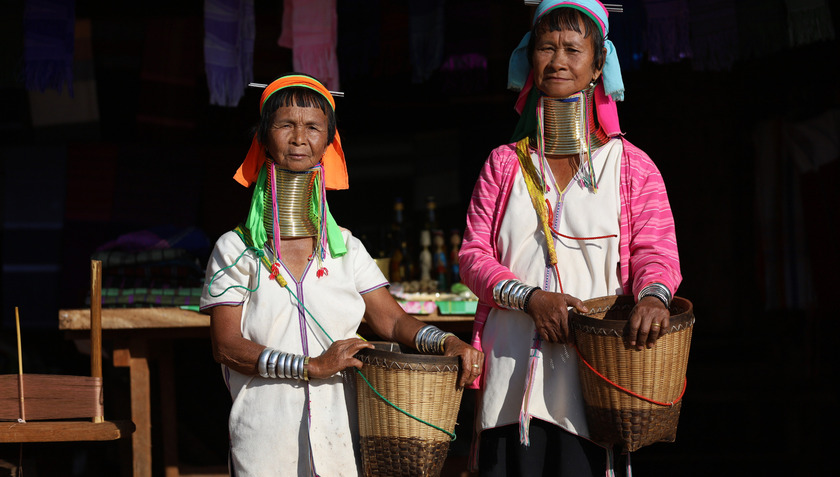
This custom is important to the Kayan people and at the same time enriches the cultural beauty of the country.
At the age of 5, Kayan girls begin wearing copper rings around their necks. These are stacked on top of each other and over time cause their necks to lengthen by putting pressure on the collarbone and chest area. Therefore, wearing large rings for a long time often causes health problems in the neck of Kayan women. The area around their necks is permanently sore and has thinner skin than the rest of the body. The total weight of each set of necklaces can be up to 10 kg.

At the age of five, Kayan girls begin wearing copper rings around their necks.
However, if they remove the rings, they feel uncomfortable. They can even have serious health problems because their necks are too weak. In the Kayan tribe, not everyone has the right to wear a full set of “neck rings”.
There are many explanations for this strange custom. Some believe that it is a way to distinguish the beauty of Kayan women from other tribes. At the same time, it will help women avoid becoming victims of human trafficking across the border.

Anyone who comes here feels curious and impressed by the Kayan long-necked women.
Another explanation is that they wear “neck rings” because their mothers and sisters do the same. In fact, this custom originates from an ancient legend. In a dream, the chief of the tribe was warned that on the fourth day after his child was born, a tiger would appear and attack the villagers. It would bite their necks to death. So the tribe decided that all children must wear neck rings from the fourth day after birth to keep the tiger from appearing.
For this reason, people strongly believe in the power of necklaces. Over time, this habit spread and became one of the strange and unique customs of the Kayan people. It is estimated that this form of body modification dates back to the 11th century and has become a tradition of more than 1,000 years.
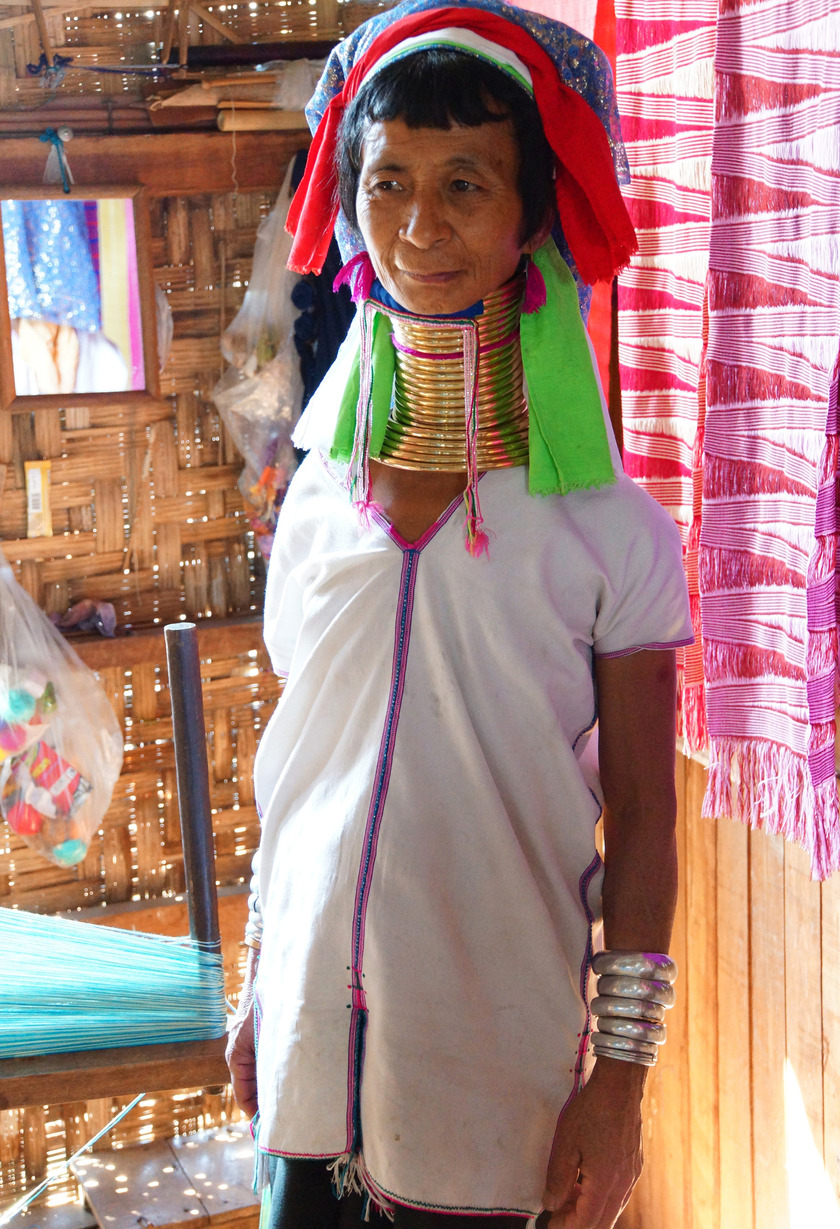
A Kayan woman can wear 25 necklaces. The number of necklaces on her neck also indicates the wealth of her family.
Kayan women wear necklaces until they die. If they betray their husbands, their necklaces are removed and they are ostracized from the community. Kayan girls also wear rings around their ankles and arms to keep their arms and legs the same size.
The custom of wearing necklaces around the neck is one of the characteristics of the people of Myanmar. Every year, about 1,000 tourists come to this country to visit the Kayan village to learn about the “giraffe” women.
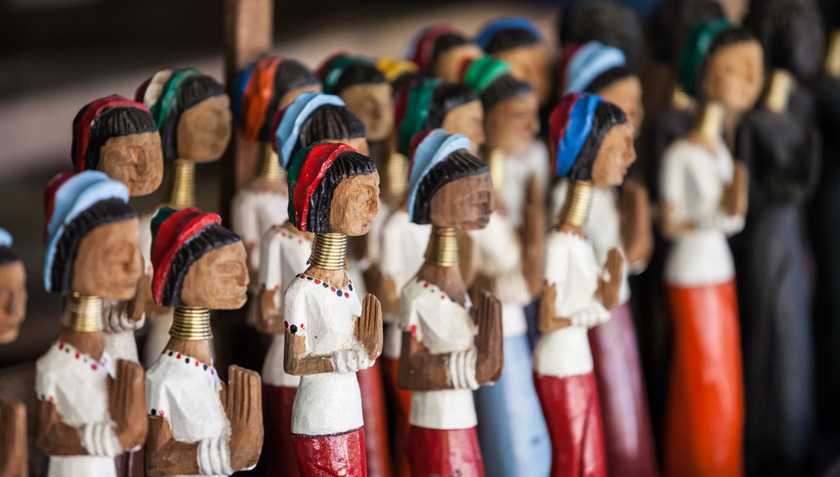
Despite the health effects, Kayan women do not want to give up these bracelets.
Western media reports that the Kayan people value the role of women as important members of the family. When drinking, women sit inside, while men are arranged to sit on the outside in a circle. Specifically, the central area is reserved for the oldest women in the village. The second circle is for the women of different ages. The women in the central circle will have the honor of holding the copper rings that are placed around the necks of Kayan girls during the coming-of-age ceremony.
The dark side of a long-standing cultural tradition
Tourists come from all over the world, but most are Thai. They often wander by to take photos or selfies with the long-necked women, and buy products from the stalls. Thai visitors can enter for free, but foreigners are charged 250 baht (about $7.50) to enter the village, which is used to cover the women’s basic monthly salary of 1,500 baht.
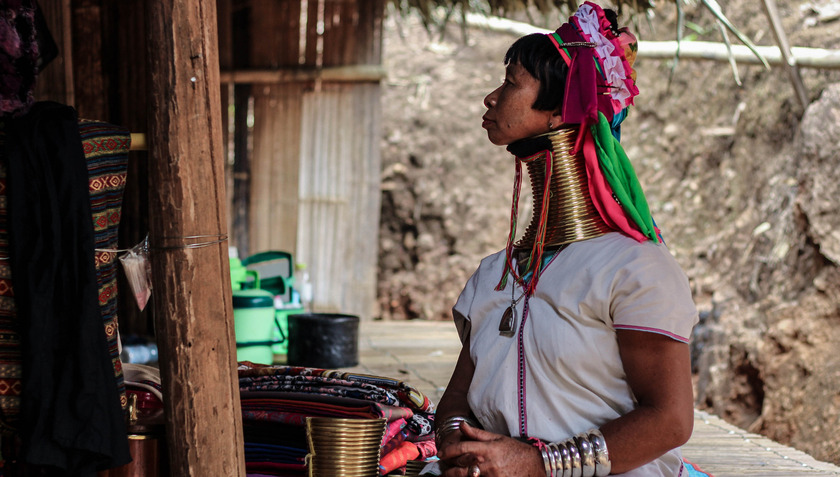
In a world that is changing rapidly, it is rare that unique customs from centuries ago still exist today.
“It’s like a human zoo,” said Kitty McKinsey, a spokeswoman for UNHCR (United Nations High Commissioner for Refugees), amid allegations that Thai authorities specifically discourage Kayah women from resettling in third countries because of their value to tourism.
For many Kayan women, wearing brass necklaces from a young age is not only a part of tradition but also a sign of pride in their cultural identity. This tradition connects them to their ancestors and the long history of their tribe, giving them a sense of belonging and pride. Each necklace is not just a piece of jewelry but also a part of their personal story and collective identity.
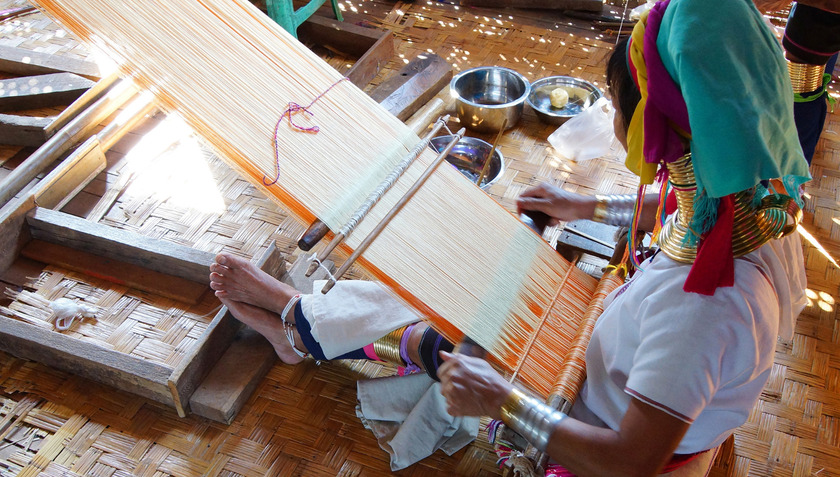
However, it cannot be denied that wearing a necklace for life also brings inconveniences and challenges.
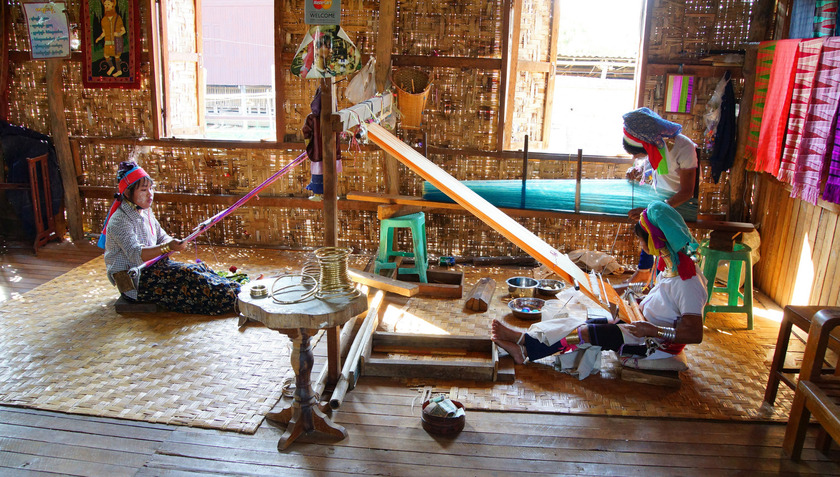
Opportunities to live and work in Thailand are severely limited for undocumented migrants like the Kayah, and the cost of living can be significantly higher.
However, there is no denying that wearing a necklace for a lifetime also brings inconveniences and challenges. Heavy necklaces can put pressure on the spine and neck muscles, leading to pain and fatigue. In addition, performing daily activities, from eating to sleeping, can also become more difficult. This raises the question of the balance between preserving tradition and ensuring the health and comfort of these women.
In the face of challenges and controversies, the future of the Kayan long neck cultural tradition may depend on the tribe itself’s flexibility and adaptability in maintaining its cultural identity while ensuring the health and well-being of its members. In this way, pride in cultural identity and personal comfort can be balanced harmoniously, ensuring the survival and sustainable development of the long neck tradition in modern society.





